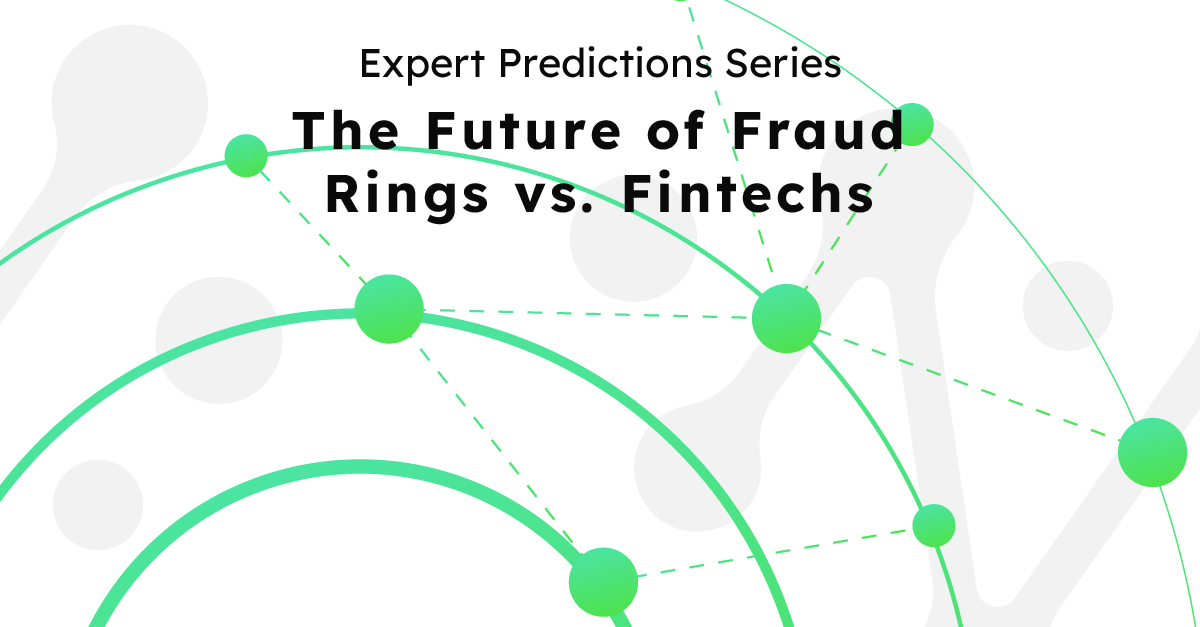
Expert Predictions Series: The Future of Fraud Rings vs. Fintechs
As the Director of Behavioral Analytics at NeuroID, I see behind the curtains—or, within the ‘inner-circle,’ if you will—of all the fraud ring attacks that attempt to break through our systems. I have a front row seat to the shifting landscape of fraud rings, which continue to defy expectations and stereotypes.
From my insider perspective, here’s what I’d tell fintechs, neobanks, challenger banks, and any other digitally-focused financial platform to think about when they consider fraud rings vs. their future growth.
Fintechs Will Be Targeted More Than Ever. And Bad Stewards Will Fall Further Behind than Ever.
Fraudsters follow the money. This is not news to any fintech or challenger bank, who often see an influx of prospective fraudsters immediately after publicly announcing a new funding round, marketing campaign, or launch. But as fintechs target hypergrowth, fraud rings are targeting them.
They know when a fintech has new funds to exploit and assume (usually correctly) that they likely don’t have a robust fraud prevention strategy yet, since they’re focused on hyper-growth. These sophisticated fraud rings strategize timing: they might attack directly after a big marketing push, for example, when fintechs will be especially averse to adding friction during a high traffic period and focus on not causing any delays to customers, rather than looking for fraudsters. We’ve seen fraudsters get so precise as to explore the possibilities of attacking at different times of the day.
They’re always testing the systems and rattling the gates. This is troubling on its own, but gets especially complicated for fintechs looking to the big leagues of chartered banking, where stewardship and compliance are key components of success. Even for non-charter focused fintechs, prudential stewardship is key to secure growth, as existing business models become less sustainable and competitive when faced with the same benefits from a trusted, chartered, or incumbent bank with shiny new digital capabilities.
It’s looking ever more possible that regulators will create unique compliance requirements just for fintechs—making fraud ring protection a critical growth point. With Varo becoming the first chartered fintech in 2020, then SoFi following after in February 2022, there has been heavy industry speculation that new regulatory policies could target fintech proportionate to perceived higher risks. For fintechs, challenger banks, and neobanks, this will likely lead to stronger risk-management requirements . . . right when they are extremely high-targets for fraud rings and cyber criminality.
We’ve seen these types of changes based on business type before. For example, credit card processors charge more for card-not-present (online) transactions than they do card-present (in store). They also have different rules for fraud management.This type of policy is common, and it costs the industry. Any fintechs looking to follow in SoFi and Varo’s footsteps in the future—either nationally or state-expansion based—need to be thinking about stewardship today.
Establish Records of Strong Stewardship Today
Stewardship at its core is about trust. Trust from your customers, but also the trust that comes from having the right systems in place to meet regulatory compliance. Good stewardship is key to creating an ongoing resiliency against fraud rings while establishing the proactive behaviors that regulators look for to ensure the proper handling of money, data, and other assets within official financial institutions.
As Deloitte recently put it: “ ‘We are not financial institutions’ historically has been a core fintech mantra heard around the industry. Unconstrained by many regulatory requirements applicable to banks and other financial institutions, fintechs pride themselves on creating deep customer connections, navigating market trends agilely, and creating disruption for traditional competitors.”
But that mantra of “we are not financial institutions” is shifting with the growth and fraud landscape. As the regulatory community is recognizing that fintechs are offering services competitive to traditional institutions, fintechs in turn are realizing that growth means charters . . . and addressing regulatory requirements at the individual state and federal levels. Keith Noreika, comptroller for the Federal Treasury’s Office of the Comptroller of the Currency (OCC), recognized this issue at a speech a few years ago, where he said that “Hundreds of fintechs presently compete against banks without the rigorous oversight and requirements facing national banks and federal savings associations,” and that providing charters that enforced regulations for fintechs would “help level the playing field in meaningful ways.”
But leveling the playing field is bad news for fintechs who haven’t made sure that they can play on that field with the major leaguers.
What Does this Mean for Fraud Ring Protection?
Fintechs, neobanks, and challenger banks move money and advertise growth that make fraudsters salivate. Behavior-based applicant-level fraud protection is key to a holistic fraud strategy built around sustainable growth. Identifying fraud ring attacks early in the process, before they can cause any real damage, is vital to establishing good stewardship in a compliance-heavy banking ecosystem—whether through a charter initiative, or simply a more level-playing field where good stewardship is the baseline, not the gold standard.
Want to get blog posts like this straight to your inbox? Subscribe now!



